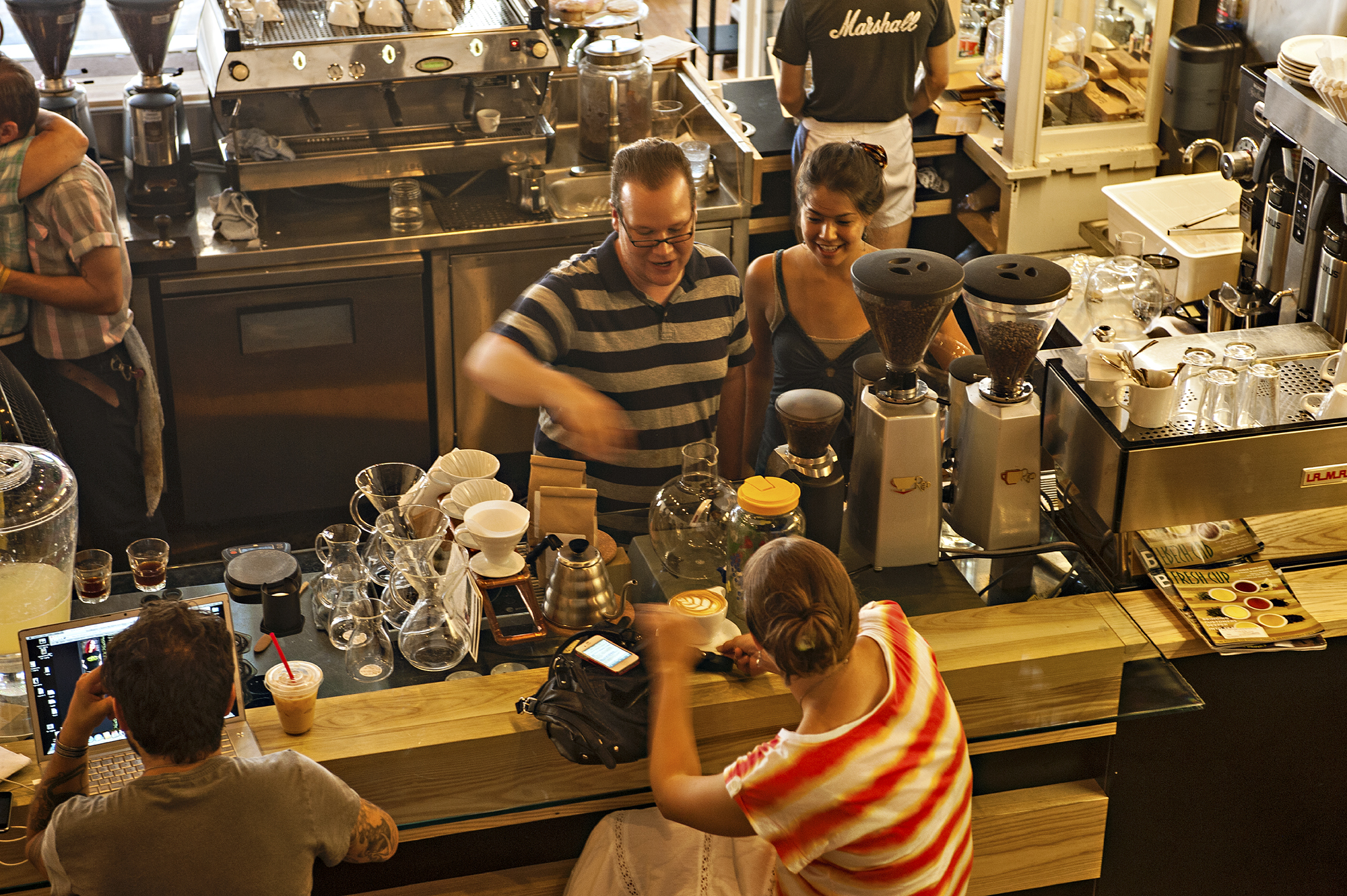History of Coffeehouses
“Let’s Start a Revolution”
The world’s first coffeehouses opened in Mecca in the 1600’s. For the price of a cup of coffee people from all walks of life were welcome to enter. It was a place of conversation where ideas were exchanged, people danced and played music. Nothing like this had existed before and soon, due to discussions around political issues, coffeehouses were banned for centuries in this region.
In the late 1600’s coffee was being grown and coffeehouses were emerging all over Europe; the Netherlands, Spain, France and England. English  coffeehouses were dubbed “Penny Universities” during the Age of Enlightenment; for an entry fee of 1 penny anyone could come in and participate in the discussions, art and music. It is said that the French Revolution started after a debate in Paris’ Café Foy.
coffeehouses were dubbed “Penny Universities” during the Age of Enlightenment; for an entry fee of 1 penny anyone could come in and participate in the discussions, art and music. It is said that the French Revolution started after a debate in Paris’ Café Foy.
The Green Dragon coffeehouse and tavern in Boston, Massachusetts is where the Boston Tea Party was planned, launching the American Revolution. Paul Revere left from this establishment on his famous ride to Lexington April 18, 1775. Since the importing of tea was then banned, Americans began drinking coffee instead.
Over 200 years later, we are still enjoying coffeehouses where people gather to meet one another, discuss business, study for class and enjoy music. Ray Oldenburg wrote in his insightful book about community gathering places, The Great, Good Place, “Most needed are those third places which lend a public balance to the increased privatization of home life. Third places are nothing more than informal public gathering places. The phrase third places derives from considering our home to be the first place in our lives, and our workplace the second.”

